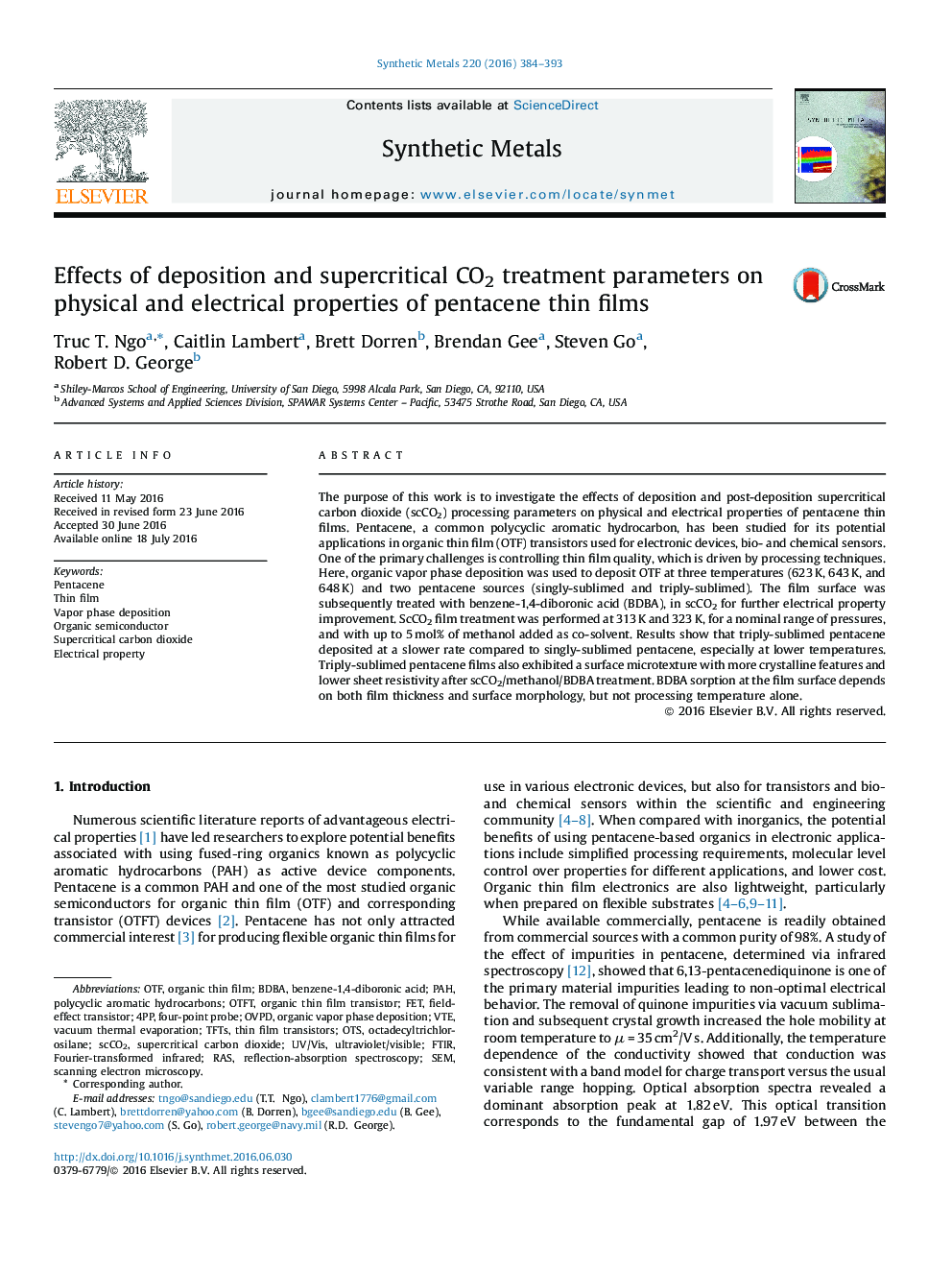| Article ID | Journal | Published Year | Pages | File Type |
|---|---|---|---|---|
| 1440106 | Synthetic Metals | 2016 | 10 Pages |
•Purer pentacene source produces more uniform film surface at slower deposition rate.•Solute uptake in film depends on solid solubility in scCO2 and co-solvent presence.•Film thickness and surface morphology contribute to solute uptake capability.•Pentacene film’s electrical property can be enhanced by scCO2/methanol treatment.
The purpose of this work is to investigate the effects of deposition and post-deposition supercritical carbon dioxide (scCO2) processing parameters on physical and electrical properties of pentacene thin films. Pentacene, a common polycyclic aromatic hydrocarbon, has been studied for its potential applications in organic thin film (OTF) transistors used for electronic devices, bio- and chemical sensors. One of the primary challenges is controlling thin film quality, which is driven by processing techniques. Here, organic vapor phase deposition was used to deposit OTF at three temperatures (623 K, 643 K, and 648 K) and two pentacene sources (singly-sublimed and triply-sublimed). The film surface was subsequently treated with benzene-1,4-diboronic acid (BDBA), in scCO2 for further electrical property improvement. ScCO2 film treatment was performed at 313 K and 323 K, for a nominal range of pressures, and with up to 5 mol% of methanol added as co-solvent. Results show that triply-sublimed pentacene deposited at a slower rate compared to singly-sublimed pentacene, especially at lower temperatures. Triply-sublimed pentacene films also exhibited a surface microtexture with more crystalline features and lower sheet resistivity after scCO2/methanol/BDBA treatment. BDBA sorption at the film surface depends on both film thickness and surface morphology, but not processing temperature alone.
